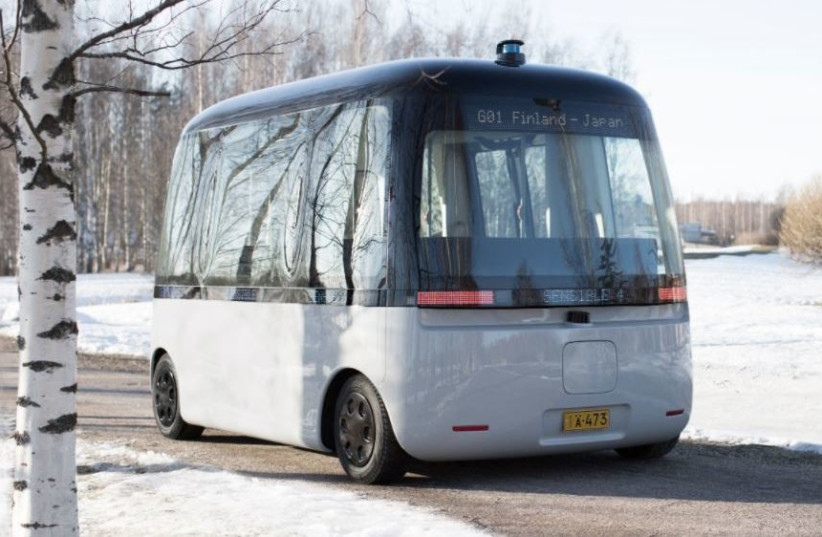A Finnish tech company is one step closer to bringing us autonomous cars
The problem is the reality of harsh weather conditions, as that is when people rely on their cars the most.
By Jerusalem Post Staff, January 24, 2021

A shuttle utilizing Sensible 4's Dawn software for driverless driving, January 19, 2021.
(photo credit: Courtesy)
Sensible 4 Ltd., a Finnish tech company that specializes in
software development for self-driving cars, will release Dawn in 2022,
the first software in the field to withstand extreme weather, the
company announced on Tuesday.
The
problem is the reality of harsh weather conditions, as that is when
people rely on their cars the most. “Why would we develop a system that
only works in optimal conditions, in warm, clear, and sunny weather, as
that's not the reality for most of the people?” said Harri Santamala,
Sensible 4's CEO.
"This first release will have remote assistance, and it works both
day and night in all weather conditions, like rain, snow, sun and fog,"
Santamala said in November.
Dawn will be available for application on any four-wheel vehicle, but Sensible 4 is gearing toward shuttle buses, as it is more "easily integrated" into the system.
“Our
basic concept is that the vehicle must work in everyday conditions,"
Santamala said. "We believe this is the way autonomous driving becomes
mainstream."
How do self-driving cars work?
Sensors.
Usually, cameras. “Cameras are good in detecting and classifying
objects in the vicinity of the vehicle, but they see poorly in the dark
or through rain and fog, and they also have difficulty in accurately
assessing distances to objects," said Santamala.
LiDAR (light detection and ranging) sensors, commonly used with
self-driving prototypes, work by focusing on their object with a laser
light, and then measuring the reflection to calculate distance and size.
Most leaders in the industry rely on LiDAR sensors. Others, namely Tesla CEO Elon Musk, uses navigation-based sensors.
In
2019, a Rehovot-based robotic vision start-up Lirhot systems developed a
novel method of navigation: a camera-like sensor inspired by insect
navigation.
“In
nature, you have bugs and insects that navigate in a specific way, and
we’re copying that to enable autonomous vehicles to see,” Lirhot CEO
Shlomi Voro, an applied physicist with dozens of patents in the field of
quantum physics, told The Jerusalem Post at the time.
Santamala
explained that their [LiDAR's] "performance also suffers from rain and
fog," as small particles from the air get in the way of the laser beam.
LiDAR
is one type of sensor. There are countless others used in autonomous
driving. The job of the software — like the one that will be offered by
Sensible 4 — is to combine and analyze all the data coming in from the
different sensors, and to use it to secure the safety of the passengers.
So, even though it relies heavily on LiDAR data, it was tested in harsh weather conditions, and worked 50% of the time.
Santamala
credits its ability to "advanced probabilistic model of positioning."
It "measures the shape of terrain and buildings surrounding the vehicle,
and effectively filters out noise and outliers," Santamala explained.
Eytan Halon contributed to this report.
Please recommend this page & follow the Sputniks Orbit


No comments:
Post a Comment